As a garden designer in the Great Plains, I always take my inspiration from moments out in the wild. Near town we have several never-plowed prairies that show me delightful new plant combinations and highlight what pollinators are using. I know that an urban prairie garden I design will be much smaller and won’t be able to have as much ecological value as a larger, natural prairie, but I know too how important our home and business landscapes can be, especially when multiple landscapes connect.
Here are some practical and philosophical lessons a prairie teaches us about designing native-plant gardens large and small.
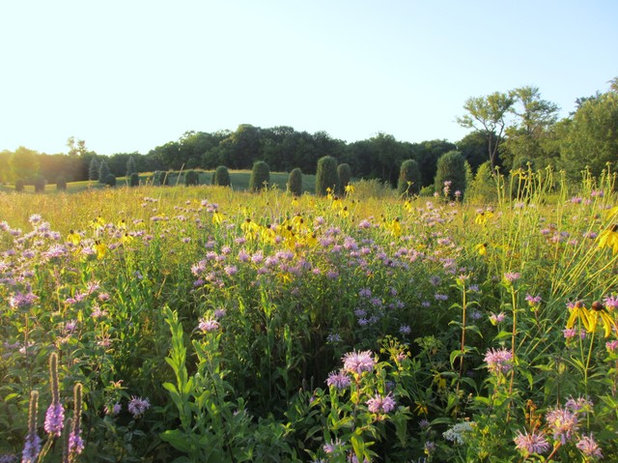
Benjamin Vogt / Monarch Gardens
1. It’s about the long view. Why are posh houses built around lakes and golf courses? Why are apartments with views of Central Park astronomically priced? Why do we treasure lawn as a default landscape element? We evolved from the grasslands of Africa and are genetically programmed to desire open spaces, perhaps as a way to see threats coming from a distance. And maybe our Western culture, especially in America, also champions the idea that flat, open spaces are a symbol of equality and partnership. Whatever the case, prairies are spaces that calm and soothe like the gentle rocking of the ocean or a parent’s arms. We crave the long view in our landscapes — the spaces that extend our perception of nature and bring us into the fold of wildness beyond the garden.
Shown: Gray-headed coneflower (
Ratibida pinnata) and wild bergamot (
Monarda fistulosa) in a residential restored prairie
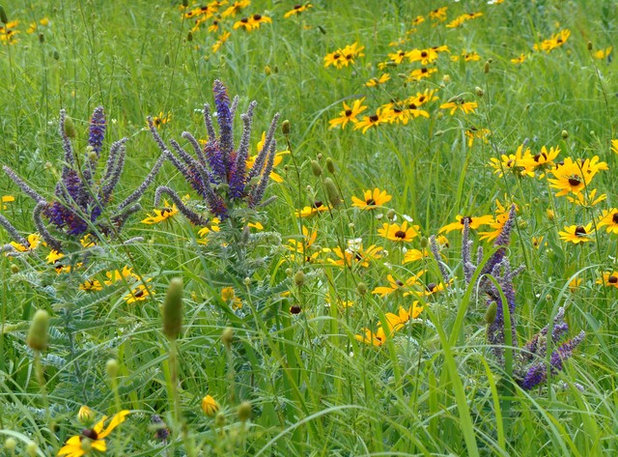
Benjamin Vogt / Monarch Gardens
2. Plants can thrive growing on top of one another. Early cool-season sedges and ephemerals give way to warm-season grasses and tall flowers. Some of the early-season plants that go fully or partially dormant can benefit from the shade of towering midsummer specimens. Also, plants have underground layers and work together to form a healthy underworld — shallow, fibrous-rooted plants use the top few feet of soil, while plants with a taproot grow 6 to 14 feet down. Many prairie plants, like grasses, also lose up to one-third of their roots each year, which helps amend the soil while fostering more microorganisms. A thick garden, like a prairie, is a healthy garden.
Shown: Black-eyed Susan (
Rudbeckia hirta) and lead plant (
Amorpha canescens)
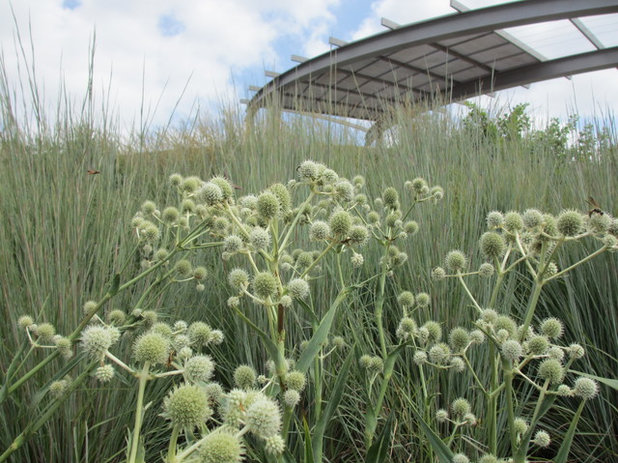
Benjamin Vogt / Monarch Gardens
3. Drifts and masses please the eye and pollinators. The subtle repetition of a grassland vista gives us something to focus on and follow through a designed space. Maybe a drift of bluestem takes us across the horizon, or dots of compass plant, tall blazing star or stiff goldenrod ground us in a frame of greens and browns. We mimic this effect in both home and larger public landscapes. Those drifts and masses we’re so fond of as a design element also serve as an effective beacon for pollinators — whether to drink nectar, gather protein-packed pollen for their young or lay eggs. The prairie shows us that subtle repetition is an important aesthetic element for humans and some wildlife.
Shown: Liittle bluestem (
Schizachyrium scoparium) and rattlesnake master (
Eryngium yuccifolium)
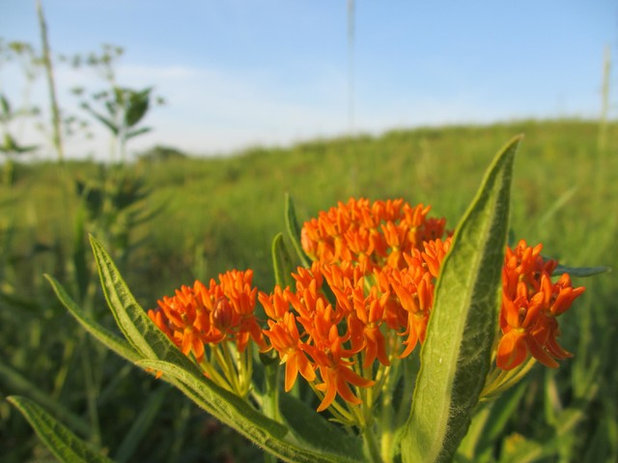
Benjamin Vogt / Monarch Gardens
4. There’s a matrix at work that serves as a necessary backdrop. Prairies are compact — you might have dozens of species in 1 square yard or smaller. Grasses work as a base layer, cooling soil and outcompeting weeds, serving as a core matrix that can comprise roughly 50 percent of our home gardens. This matrix also provides cover for various wildlife in any season.
Shown: Butterfly milkweed (
Asclepias tuberosa)
10 Top Grasses for the Central Plains | How to grow grasses
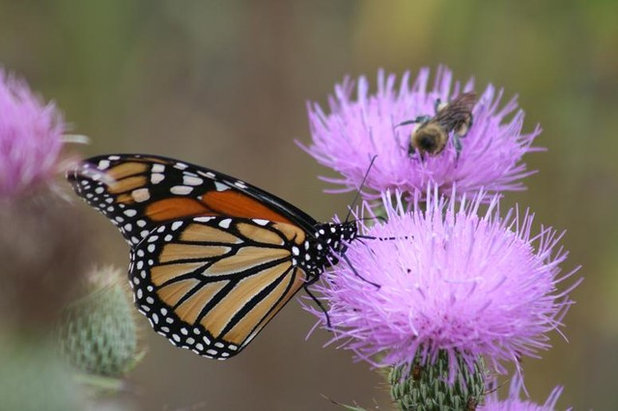
Benjamin Vogt / Monarch Gardens
5. Space and time are constant, even as we perceive them as chaotic and unpredictable. The true matrix of a prairie is time, not grass. It takes decades for a prairie to begin to reveal its true nature and purpose, just as it often does for us, and even our gardens. Why are we impatient with our built landscapes? Why are we impatient with ourselves? We grow and stabilize and find our way just as a prairie does, but it takes time. The healthiest landscapes are those that allow for time to manage the plants and wildlife interactions and that allow for a shifting mosaic of plants as we all learn together what works and what doesn’t. Prairies teach us that patience leads to deeper meaning, insight and satisfaction in our gardens and in ourselves.
Shown: Monarch butterfly on a native thistle. Native thistles have silver to white undersides on their leaves and our highly beneficial to pollinators.





